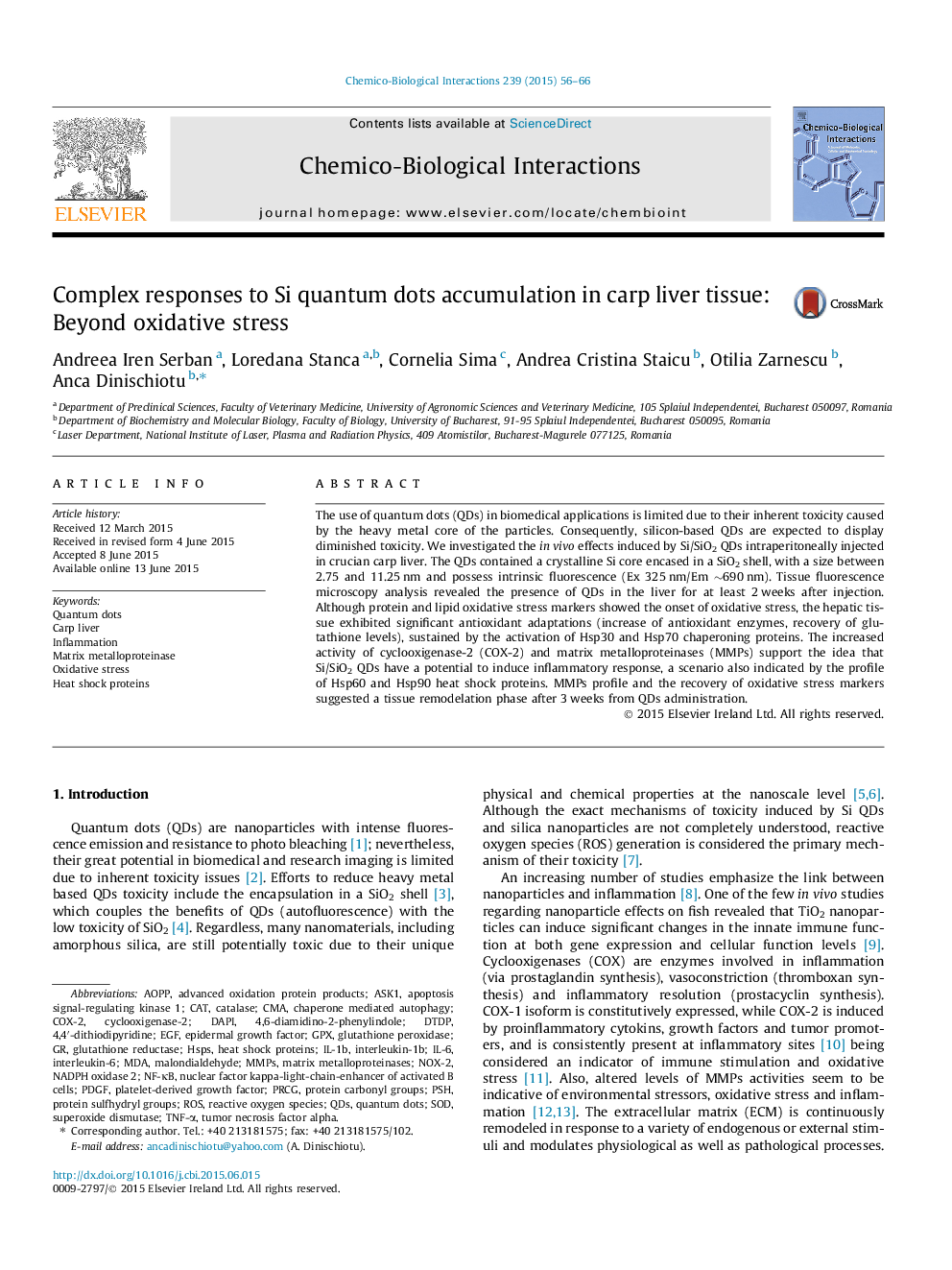| Article ID | Journal | Published Year | Pages | File Type |
|---|---|---|---|---|
| 5847829 | Chemico-Biological Interactions | 2015 | 11 Pages |
â¢Si/SiO2 QDs accumulation in carp liver generated oxidative stress.â¢Hsps expression supported cell homeostasis, and dampened inflammation.â¢MMP-9 and COX-2 were involved in inflammation initiation and resolution.
The use of quantum dots (QDs) in biomedical applications is limited due to their inherent toxicity caused by the heavy metal core of the particles. Consequently, silicon-based QDs are expected to display diminished toxicity. We investigated the in vivo effects induced by Si/SiO2 QDs intraperitoneally injected in crucian carp liver. The QDs contained a crystalline Si core encased in a SiO2 shell, with a size between 2.75 and 11.25Â nm and possess intrinsic fluorescence (Ex 325Â nm/Em â¼690Â nm). Tissue fluorescence microscopy analysis revealed the presence of QDs in the liver for at least 2Â weeks after injection. Although protein and lipid oxidative stress markers showed the onset of oxidative stress, the hepatic tissue exhibited significant antioxidant adaptations (increase of antioxidant enzymes, recovery of glutathione levels), sustained by the activation of Hsp30 and Hsp70 chaperoning proteins. The increased activity of cyclooxigenase-2 (COX-2) and matrix metalloproteinases (MMPs) support the idea that Si/SiO2 QDs have a potential to induce inflammatory response, a scenario also indicated by the profile of Hsp60 and Hsp90 heat shock proteins. MMPs profile and the recovery of oxidative stress markers suggested a tissue remodelation phase after 3Â weeks from QDs administration.
Graphical abstractDownload full-size image
